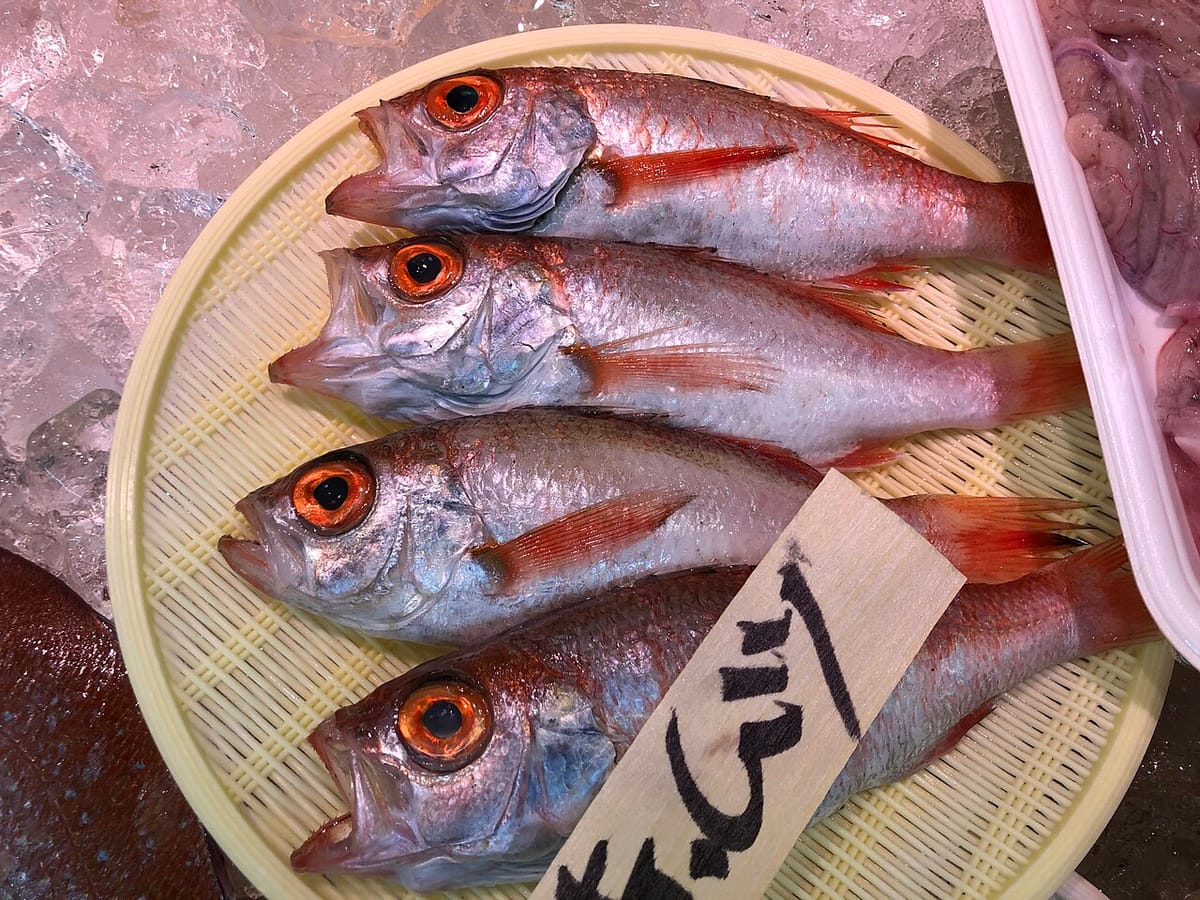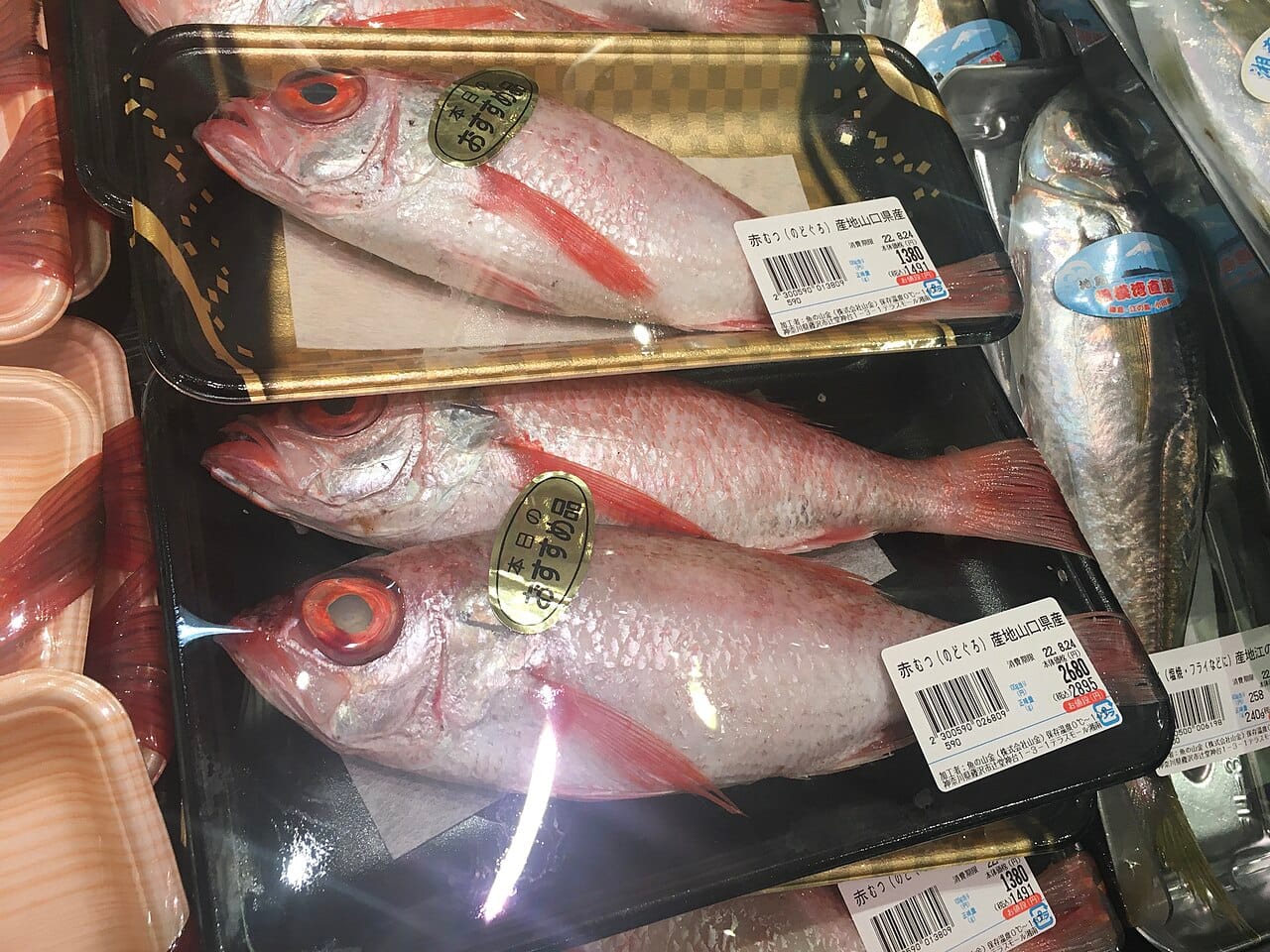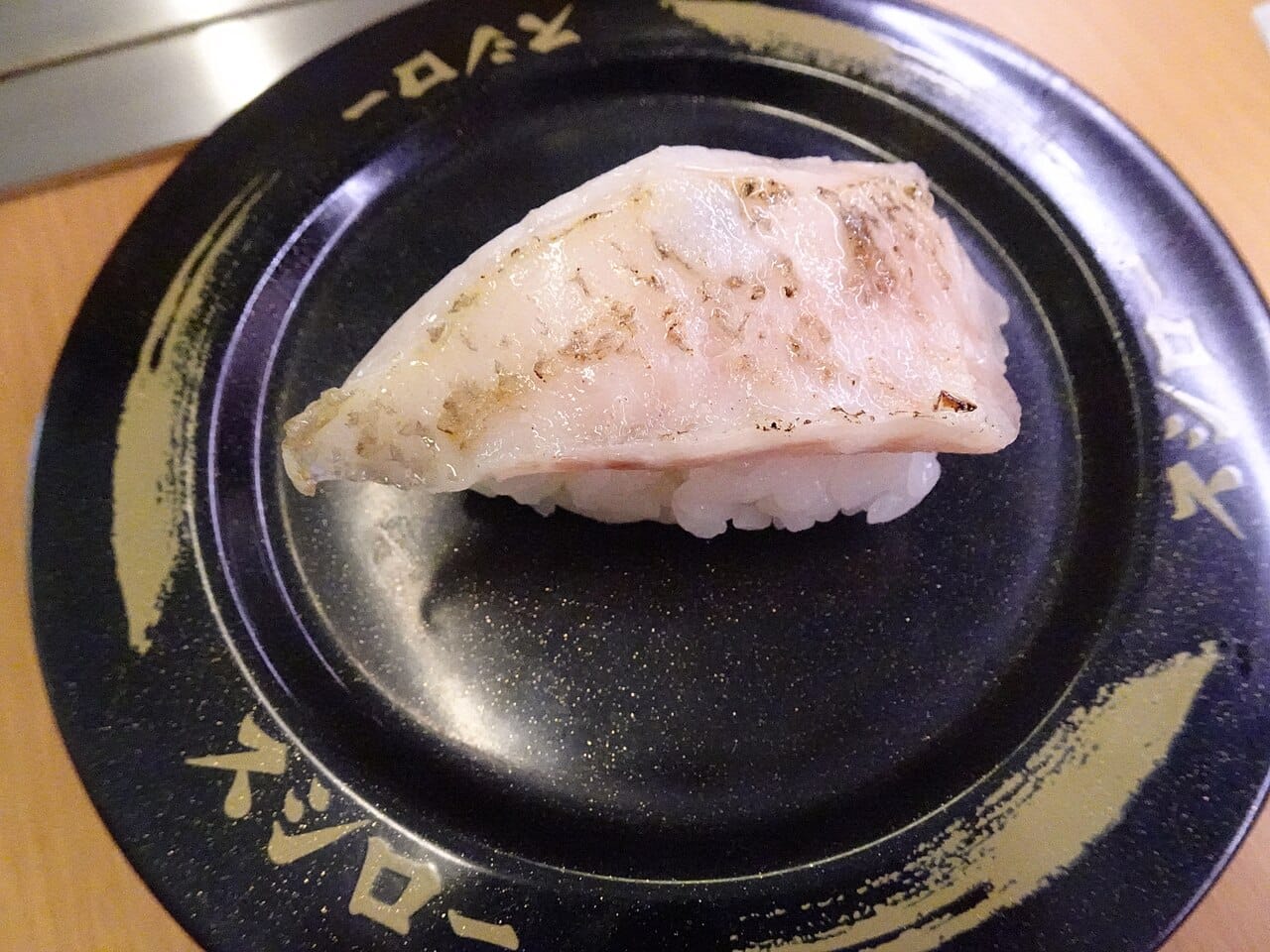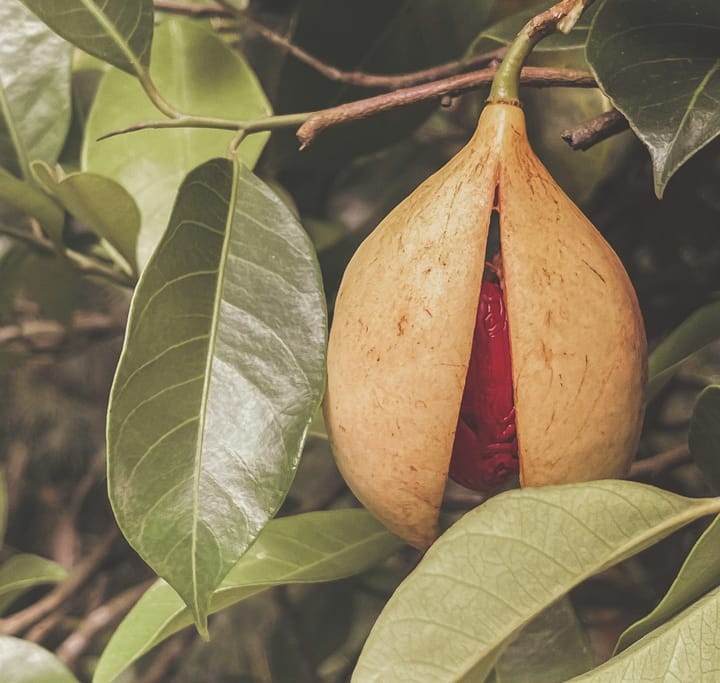Why Akamutsu (Rosy Seabass) Is Japan's Most Expensive White Fish
Discover why akamutsu (rosy seabass) is Japan's most coveted white fish. This deep-sea delicacy's exceptional fat content and melt-in-your-mouth texture earn it the nickname 'white toro.

If you've never heard of akamutsu, you're not alone. This ruby-red fish, also known as rosy seabass or nodoguro in Japan, might just be the most luxurious seafood you've never tried.
With prices that can rival premium bluefin tuna and a taste that's earned it the nickname "white toro," this deep-sea delicacy is redefining what high-end dining means for American food enthusiasts.
What Makes This Fish So Special?
At first glance, akamutsu (Doederleinia berycoides) looks like any other red-scaled fish you might see at a fish market.
But here's where things get interesting: beneath that shimmering crimson exterior lies a secret that has Japanese chefs and food lovers obsessed.
The fish contains an extraordinary layer of fat just under its skin—we're talking fat content that can hit 20% or higher, similar to the marbling you'd find in top-grade wagyu beef.
This isn't just any fat, though. It's what gives akamutsu its impossibly silky texture and rich, sweet flavor that literally melts on your tongue.
When sushi masters call it "white toro," they're not exaggerating—this fish delivers the same luxurious mouth-feel as fatty tuna belly, but with its own unique character.
The Flavor That Commands $100 Per Pound

So what does a fish worth more than lobster actually taste like? Imagine the richest, most buttery piece of fish you've ever had, then add layers of complexity that unfold with each bite.
The initial taste is pure, clean sweetness—no trace of that "fishy" flavor that turns some people off seafood. Then comes the umami, deep and satisfying, coating your palate with oils that carry subtle marine notes.
Food critics often struggle to describe akamutsu without resorting to comparisons. It's been called the "foie gras of the sea," which gives you an idea of the richness we're talking about.
But unlike foie gras, there's a delicate quality to akamutsu that keeps it from being overwhelming. It's rich but refined, indulgent yet somehow light.
When served as sashimi, the experience is almost ethereal. The flesh practically dissolves on contact with your tongue, releasing those precious oils in a way that makes each piece a moment to savor.
No wonder Tokyo's high-end sushi counters charge $30 or more for a single piece of akamutsu nigiri.
When to Find the Best Akamutsu
Timing is everything with this fish. While you might find akamutsu year-round at specialty Japanese markets, insiders know that October through March is when the magic happens.
During these colder months, the fish bulk up on fat reserves to survive the frigid depths, creating the melt-in-your-mouth texture that commands top dollar.
December and January are the sweet spot—what Japanese fishermen call the "shin-nodoguro" season, meaning "true nodoguro."
Fish caught during these peak winter months, especially from the Sea of Japan off Shimane and Yamaguchi prefectures, represent the absolute pinnacle of quality.
The combination of icy waters and strong currents in these regions produces specimens with incredibly concentrated flavors and firm, fatty flesh.
How Japan's Food Culture Elevates This Fish

In Japan, akamutsu isn't just expensive seafood—it's a cultural icon that represents everything the Japanese value in their cuisine.
The fish perfectly embodies "shun," the concept of enjoying ingredients at their seasonal peak. It also aligns with the Japanese preference for subtle, nuanced flavors that reveal themselves slowly rather than hitting you over the head.
Traditional Japanese preparation methods are all about respecting the fish's natural qualities.
At kaiseki restaurants (Japan's equivalent of Michelin-starred fine dining), chefs might serve akamutsu "aburi" style—lightly torching the skin to render the fat while keeping the interior silky and raw.
This technique requires the kind of precision that takes years to master, creating a perfect contrast between crispy and melting textures.
In the Hokuriku region along the Sea of Japan coast, akamutsu takes on almost mythical status.
The city of Kanazawa has made "nodoguro-meshi" (grilled akamutsu over rice) its signature dish.
Here, the fish is grilled to perfection and placed over seasoned rice, allowing the rendered oils to soak into every grain. What started as a special occasion dish has become a bucket-list experience for food tourists.
From 600 Feet Below to Your Plate
The journey from ocean to plate helps explain why akamutsu commands such astronomical prices.
These fish live at depths of 300 to 600 feet, making them challenging to catch without damaging their delicate flesh.
The most prized specimens are caught using traditional pole-and-line methods by small boats—a labor-intensive process that ensures each fish arrives in perfect condition.
Once caught, the clock starts ticking. Premium akamutsu undergoes "ikejime," a Japanese dispatching technique that preserves meat quality by preventing stress hormones and lactic acid from affecting the flesh.
The fish are then rushed to market in specialized containers that maintain exact temperatures.
By the time a piece of akamutsu reaches your plate at a high-end restaurant, it's been handled with the kind of care usually reserved for precious gems.
How Top Chefs Are Pushing Boundaries
While traditional preparations still dominate, innovative chefs on both sides of the Pacific are discovering new ways to showcase akamutsu's incredible qualities.
In New York and Los Angeles, where high-end Japanese restaurants compete for the most discerning diners, akamutsu might appear as delicate crudo with California citrus, or as the star of omakase courses that blend traditional techniques with local ingredients.
Some progressive sushi chefs have even started experimenting with aging akamutsu, similar to how they age beef or certain tunas.
When done correctly, aging can intensify the fish's natural umami while maintaining its signature buttery texture.
These experiments might horrify traditionalists, but they're expanding the possibilities for this already extraordinary ingredient.
The Sustainability Story
Here's where things get complicated. Akamutsu's increasing popularity has put pressure on wild populations, especially given their deep-sea habitat and relatively slow growth rate.
The good news? Japan has implemented some of the world's strictest fishing quotas for akamutsu, and researchers are making progress on sustainable aquaculture techniques.
This focus on sustainability has actually increased the fish's cachet. With limited supply and growing demand, only the highest-quality specimens make it to market.
For conscious consumers, knowing that their akamutsu comes from well-managed fisheries adds another layer of value to an already premium product.
Is It Worth the Price Tag?
For serious food lovers, trying authentic akamutsu is a bucket-list experience that's absolutely worth the splurge.
This isn't just another expensive fish—it's a window into Japanese culinary culture at its most refined.
The combination of incredible flavor, perfect texture, and cultural significance makes akamutsu more than a meal; it's an investment in understanding why certain ingredients achieve legendary status.
Whether you encounter it at a traditional sushi counter in Tokyo or a cutting-edge Japanese restaurant in Manhattan, akamutsu offers something genuinely special.
In a world where "luxury" foods often disappoint, this rosy seabass delivers an experience that lives up to every bit of its hefty price tag.
For those who appreciate the finer things in culinary life, akamutsu isn't just worth trying—it's essential.


